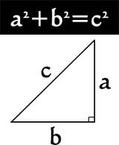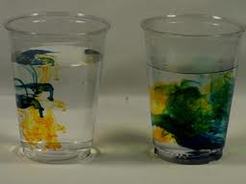Wrapping Up Pythagoras  Pythagorean Theorem Pythagorean Theorem Students opened class this week by listing the many and varied practical applications of the Pythagorean Theorem - architecture, carpentry, navigation, surveying, geometry, trigonometry, digital graphics, etc. Great job everyone on researching this topic and completing the homework! Ancient Atomic Theory  Democritus (ca. 300 B.C.E.) Democritus (ca. 300 B.C.E.) We then broke into small groups and students worked together to answer questions related to their assigned reading of Chapter 10. We reviewed the work of Greek philosopher Democritus and his remarkably advanced atomic theory and speculated on the significant obstacle ancient scientists had in proving a theory of atoms - namely that they lacked the technology for observation and experimentation. Democritus' hypothesis of the indivisible atom as the smallest universal building block of life would not be further developed for another twenty-two centuries until the work of British chemist and physicist John Dalton in 1803. This ancient hypothesis that small, indestructible particles (atoms) make up everything in the universe may seem simple to us today, but it was a remarkably profound achievement and cutting-edge thinking in 300 B.C.E.! We spent some time discussing our current understanding of the atom and briefly reviewed the definitions for element, atom, molecule, and compound (students should see if they can explain the "ice cream shop" analogy to a parent or sibling!).  Students then broke into pairs and conducted a simple experiment to consider how we can explain the way molecules act if we cannot see them. Each team put several drops of food coloring into a cup of cold water and a cup of hot water and observed/sketched what happened. We discussed how the rate of the spread of the food coloring could be explained by the motion of atoms (heat provides energy to the molecules, causing them to vibrate, bounce around and move more quickly). We also learned about the Second Law of Thermodynamics and the physical principle of entropy (which causes the molecules to become less organized). Students recorded their findings in their Student Quest Guide worksheet (page 34). Homework! For next week....
Comments are closed.
|
Categories
All
Archives
May 2016
|

 RSS Feed
RSS Feed